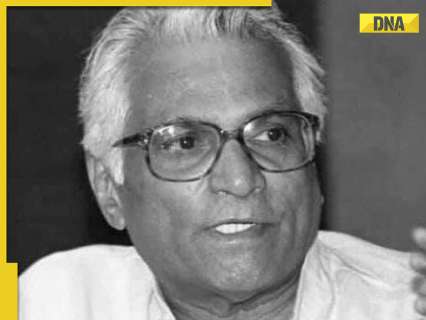
An anxious George Fernandes, who was defence minister at the time, urgently flew to Nagpur and addressed the workers on the assembly line, telling them that the nation’s pride depended on their efforts.
Bofors guns were a game-changer in the Kargil War, with the artillery shells being made in Nagpur’s Ordnance Factory Ambajhari. The factory worked quickly to produce the shells needed for the high-altitude battlefield, 2,000 km away from the war zone.
Back in 1999, Ordnance Factory Ambajhari was the only place in India with the right technology and resources to quickly produce the large 155mm shells needed for the guns, Times of India quoted veterans from the ordnance factory as saying.
An anxious George Fernandes, who was defence minister at the time, urgently flew to Nagpur and addressed the workers on the assembly line, telling them that the nation’s pride depended on their efforts. The workers, remembering the event 25 years later, recall how they worked round the clock to make sure there was enough ammunition for the guns during the crucial war with Pakistan.
Fernandes, during his visit to the factory, was brought to tears as he watched workers using tongs to handle scorching hot iron blocks in the extreme June heat of the shell-forging section, recalls a retired union leader. The workers’ extraordinary patriotism and dedication, despite the intense blast-furnace temperatures, eventually led the defence ministry to invest in robotic machines, according to veterans.
As the war intensified along the LoC, the defence minister gathered with workers and officials in Nagpur, telling the workers that the guns were there, but gunpowder was needed. The army was standing up to the enemy and, now, it was up to Nagpur’s Ordnance Factory to ensure that they did not run out of ammunition. His words energised everyone, retired Indian Ordnance Factory Services officer Vinod Munghate told ToI.
Bofors FH77: Kargil’s Unsung Hero
The FH77, also known as the Field Howitzer 77, is a 155mm howitzer from Sweden, developed and produced by Swedish company AB Bofors. In India, it is commonly referred to as the Bofors gun that caused significant casualties to the Pakistani forces during the Kargil War. This conflict marked the first time these guns were used in a direct-fire role. The terrain in the Kargil region is mostly at altitudes above 8,000 feet, which limits the effectiveness of artillery in warfare.
The Indian Army faced a tough challenge in driving out Pakistani soldiers, many of whom were from the Northern Light Infantry regiment. The Pakistani forces were following a strategic military plan to seize key positions on hilltops that overlooked routes linking Siachen and Kashmir Valley with the rest of India.
The Bofors gun, with a range of over 35 km in the high-altitude terrain, was a game-changer for the Indian Army in Kargil. It could fire three rounds in just 12 seconds. Its ability to hit enemy positions at nearly a 90-degree angle allowed it to operate right under the noses of the Pakistani soldiers occupying the hilltops.
The 155mm FH77 Bofors guns outperformed any medium artillery that the Pakistani Army had, allowing the Indian Army to dominate along the LoC a ceasefire was reached in 2003. Powered by a Mercedes Benz engine, the Bofors guns were capable of moving short distances on their own. These guns remained the primary howitzers for the Indian Army in the high altitudes of Kashmir until the M777 howitzers from the US were introduced in 2018.
From Scandal to Kargil Saviour
Amid the challenging terrain of Kargil, the Bofors howitzer, despite its controversial history, emerged as the unsung hero that turned the tide in India’s favour. Although the Bofors name had been embroiled in Indian politics and public debate since the 1980s, following corruption allegations against the Rajiv Gandhi government, it proved its worth on the battlefield.
The Bofors scandal was a significant political and financial controversy centered on allegations of corruption in a defence deal between the Indian government and Swedish arms company AB Bofors. In March 1986, the Rajiv Gandhi government signed a contract with AB Bofors to supply the Indian Army with 400 field guns, specifically 155 mm howitzers. The deal was worth around Rs 1,437 crore (approximately $285 million).
In April 1987, Swedish Radio reported that Bofors had allegedly paid illegal kickbacks to Indian politicians and defence officials to secure the contract. These payments were said to have been funnelled through intermediaries and offshore bank accounts to hide their true source. The political backlash was immense, eventually leading to the resignation of Rajiv Gandhi’s defence minister, Vishwanath Pratap Singh, who then became his main opponent in the next General Elections.
During the 1989 parliamentary elections, such chants as “Gali gali mein shor hai, Rajiv Gandhi chor hai” (There’s a cry in every street, Rajiv Gandhi is a thief) echoed throughout the country. As a result, Rajiv Gandhi’s government fell. Ironically, no wrongdoing was ever proven against Rajiv Gandhi. After his tragic death in 1991, Delhi High Court cleared him of all charges.
(The author of this article is a Defence, Aerospace & Political Analyst based in Bengaluru. He is also Director of ADD Engineering Components, India, Pvt. Ltd, a subsidiary of ADD Engineering GmbH, Germany. You can reach him at: girishlinganna@gmail.com)
Disclaimer: The views expressed in this article are of the author only.
Find your daily dose of news & explainers in your WhatsApp. Stay updated, Stay informed- Follow DNA on WhatsApp.
